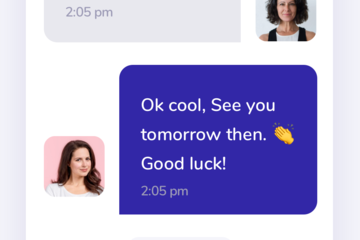Browse
Culture And Society
An Introduction to "Teaching Multilingual Learners: An Introduction to Translingual Pedagogy"
Sharing Strategies Think, Pair, Share/Square Share/Group Share: Using thisapproach, students work with peer partners to discuss the lesson, check each other’swork, and share strategies.Partner Reading Student partners take turns reading orally and listening to each other. Peer partners can also be helpful with discussing answers to comprehension questions, spelling, proofreading, and solving math problems.
Self-Correction Opportunities Students use calculators or a key provided by the teacher to check their answers.Learning Games Students play board games that reinforce skills such as sight vocabulary, phonics, grammar rules, and basic math facts.
By:
Hasha
Thursday, Jun 10, 2021
CULTURE AND SOCIETY
+2

Leave a comment
ADHD Students and Classroom Considerations
https://education.wm.edu/centers/ttac/documents/packets/adhd.pdf
The culture of the classroom can either support or create barriers to student success (Piffner,2011).
Factors that foster attention, positive behavior, and academic and social success includeestablishing positive relationships with students, adopting classroom management techniques,and creating a physical arrangement that facilitates learning.
It is often a positive relationship with one teacher that facilitates school success for a studentwith ADHD (Piffner, 2011).
When teachers connect with students and appreciate their unique skills and interests, students are more likely to strive for achievement and positively respond to classroom rules and procedures.
When using a proactive approach to classroom management, teachers support all students andcreate conditions that prepare them for learning (Piffner, 2011).
Some strategies for positive management include clear directions, meaningful feedback, and opportunities for collaboration with peers. Here are some others.
Opportunities to RespondStudents with ADHD often have the most trouble attending during drill-and-practice assignments because of the repetitive nature of the tasks. Peer-mediated approaches such as those enumerated in the next screens are particularly effective for students with ADHD in such cases, because they increase students’ opportunities for engagement and active learning (Piffner, 2011).
In creating peer-mediated activities, the teacher may need to choose students whoseskill levels complement each other. Students with and without attention difficulties andimpulsivity should be considered for peer partnerships.
Peer TutoringPeer tutoring is one of the more effective strategies for students with ADHD, because it provides many of the same supports as one-to-one instruction. It facilitates the acquisition of both academic and social skills.
Peer tutoring is most effective when training is provided to participating students (Piffner, 2011). Tutors need to be taught how to be prepared with materials needed for the session and howto give positive and corrective feedback to their partner (Greenwood & Delquadri,1995).
Cooperative LearningCarefully structured cooperative learning groups in which each student is assigned a role and has clear expectations for desired outcomes are very helpful for students with ADHD. The more structured the cooperative activity, the more likely it is that these students will succeed.Sharing Strategies Think, Pair, Share/Square Share/Group Share: Using thisapproach, students work with peer partners to discuss the lesson, check each other’swork, and share strategies.
By:
Anne miller New vijayalaxmi santosh mhetre mali
Thursday, Jun 10, 2021
AGRI-FOOD SYSTEMS
+5
Leave a comment
The following organizational supports are particularly useful. Students should be taught to use these tools through teacher modeling and guided practice with feedback before being expected to use them more independently.
By:
Anne miller New vijayalaxmi santosh mhetre mali
Thursday, Jun 10, 2021
AGRI-FOOD SYSTEMS
+6

Leave a comment
The following organizational supports are particularly useful. Students should be taught to use these tools through teacher modeling and guided practice with feedback before being expected to use them more independently.
By:
Anne miller New vijayalaxmi santosh mhetre mali
Thursday, Jun 10, 2021
AGRI-FOOD SYSTEMS
+8

Leave a comment
They are more likely to respond positively when teachers establish class routines and set procedures and maintain a well-organized learning environment.
Clear rules and advanced planning are keys to success for teachers of students with ADHD.
By:
Anne miller New vijayalaxmi santosh mhetre mali
Thursday, Jun 10, 2021
AGRI-FOOD SYSTEMS
+8
Leave a comment
Culture encompasses religion, food, what we wear, how we wear it, our language, marriage, music, what we believe is right or wrong, how we sit at the table, how we greet visitors, how we behave with loved ones, and a million other things," Cristina De Rossi, an anthropologist at Barnet and Southgate College in London, told Live Science.
By:
Edwin Castel
Thursday, Jun 10, 2021
AGRI-FOOD SYSTEMS
+5

Leave a comment
Culture definition is - the customary beliefs, social forms, and material traits of a racial, religious, or social group; also : the characteristic features of everyday .
By:
Edwin Castel
Thursday, Jun 10, 2021
CULTURE AND SOCIETY
Leave a comment
Data Tag Implementation
Clean Out Dates: Periodically ask the student to sort through and clean out his orher desk, book bag, and other special places where written assignments are stored.Extra Books: Provide the student with an extra set of books or electronicversions of books for use at home. This eliminates the student having toremember to bring books back and forth.Use of Calendars: Teach the student to use a calendar for schedulingassignments. Tape a schedule of planned daily activities to the student’s desk tohelp with time management and transitions.Checklist of Homework Supplies: Give the student a checklist that identifiescategories of items needed for homework assignments. The checklist can betaped to the inside of the student’s locker or desk.
By:
Jane Joew
Thursday, Jun 10, 2021
CULTURE AND SOCIETY
+1

Leave a comment
ADHD and School interventions
https://education.wm.edu/centers/ttac/documents/packets/adhd.pdf
School interventions should include a team approach across multiple settings, consisting of bothpreventive and intervention strategies.
Interventions must be based upon assessment data that includes information about the student’s strengths and needs as well as the environmental conditions in which her characteristics of ADHD occur.
Progress monitoring and strategy adjustments are critical to the success of any intervention plan (Wolraich & DuPaul, 2010).
The first step in creating classroom supports for students with ADHD is understanding thestudents’ strengths and needs. This involves formal and informal assessment, as well ascollaboration among educational professionals and the students’ families.
If a student is not responsive to behavioral strategies and interventions, more intensive interventions, such as functional behavior assessment and behavior intervention plans, should be considered (see Practical FBA).
No one intervention is universally effective for all students with ADHD. A combination of research-based and promising practices is recommended.
Here are several of these practices:
Giving DirectionsMany students with ADHD have trouble following directions. Here are some guidelines that might help address this problem.
Number of Directions: Give a minimal number of directions or steps at a time.If necessary, have students repeat the directions to the teacher or a peer partner.
Form of Directions: Provide written directions or steps, or a visual model of acompleted project. Teach students how to refer to these items as reminders ofprocess steps to complete tasks. This strategy is particularly helpful for long-termprojects.
Written AssignmentsMany students with ADHD have particular challenges with written work due to finemotorskills difficulties, motor planning issues, and difficulty alternating their attentionfrom a book to their written responses.
Students with ADHD may also need assistance breaking a larger task or project into smaller, more workable units.
The following strategies can be used to address these needs.
By:
Scott Henderson
Wednesday, Jun 9, 2021
CULTURE AND SOCIETY

Leave a comment
Many students with ADHD have significant difficulties with organization. They are more likely to respond positively when teachers establish class routines and set procedures and maintain a well-organized learning environment. Clear rules and advanced planning are keys to success for teachers of students with ADHD. The following organizational supports are particularly useful. Students should be taught to use these tools through teacher modeling and guided practice with feedback before being expected to use them more independently.
By:
Harry Nomes
Thursday, May 27, 2021
CULTURE AND SOCIETY

Leave a comment
Agri and food Scholar
Primer text from the College of William & Mary.https://education.wm.edu/centers/ttac/documents/packets/adhd.pdf
Many students with ADHD have significant difficulties with organization.
They are more likely to respond positively when teachers establish class routines and set procedures and maintain a well-organized learning environment.
Clear rules and advanced planning are keys to success for teachers of students with ADHD.
The following organizational supports are particularly useful. Students should be taught to use these tools through teacher modeling and guided practice with feedback before being expected to use them more independently.
Assignment Notebook: Provide the student with an assignment notebook to helporganize homework and seatwork.Color-Coded Folders: Provide the student with color-coded folders to helporganize assignments for different academic subjects.Homework Partners: Assign the student a partner who can help record
By:
Anne miller New vijayalaxmi santosh mhetre mali
Thursday, May 27, 2021
CULTURE AND SOCIETY
+2
No Preview Available


Leave a comment